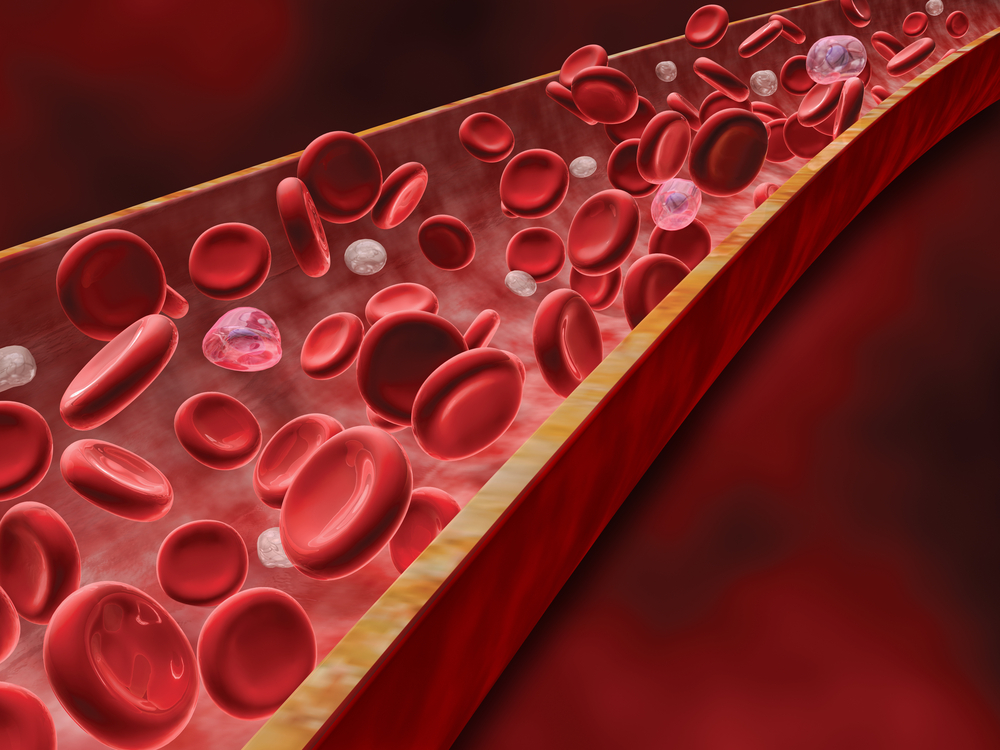MG Can Develop in Certain Blood Cancer Patients, Study Suggests

Myasthenia gravis (MG) can develop in people with polycythemia vera (PV), a type of blood cancer, even in the absence of thymomas — tumors of the thymus — a study reporting two cases suggests.
The study, “Association of polycythemia vera with positive JAK2V617F mutation and myasthenia gravis: A report of two cases,” was published in the journal Clinical Case Reports.
Myeloproliferative neoplasms, or MPNs, are a blood cancer that occurs when the body makes too much of a specific type of blood cells in the bone marrow. One example is PV, a cancer characterized by the excessive production of red blood cells.
Previous research has reported a rare link between MG and chronic myeloid leukemia, a type of MPN. However, no association has been reported for PV.
Now, researchers at the Hamad General Hospital, in Qatar, described two cases of myasthenia gravis with PV. Notably, the team pointed out that the prevalence of MG in Arab countries is slightly higher than in the United States (0.05%‐0.08% vs. 0.02%).
The first case involved a 57-year-old woman with a six-month history of speech impairment and voice changes. The patient also complained about intermittent double vision (diplopia), along with additional signs suggesting MG, including strained speech and fatigue.
An MG diagnosis was confirmed with electromyography, which is a procedure used to assess the health of muscles and nerve cells, as well as with a blood analysis that showed a high concentration of antibodies against muscle-specific tyrosine kinase, a protein found at the connection between nerves and muscles.
Her initial treatment included steroids and azathioprine. However, this led to the development of both Cushing syndrome, caused by excess levels of the hormone cortisol, and to multiple fractures of the spine.
The woman was switched to tacrolimus, an immunosuppressive medication, with excellent response. After a congestive heart failure, believed to be associated with tacrolimus, the patient was treated with mycophenolate, commonly used with other medications to help prevent transplant organ rejection.
During her initial hospital visit, the clinicians detected high levels of hemoglobin — 17.8 mg/dL, while normal levels are below 16.5 mg/dL — along with high hematocrit levels (the volume percentage of red blood cells). In addition, she presented higher than normal numbers of red blood cells, white blood cells, and platelets, which are cell fragments in the blood that form clots and stop or prevent bleeding.
The patient also had an enlarged liver and spleen, called hepatosplenomegaly, confirmed by abdominal ultrasound. Genetic tests revealed she carried a mutation in the JAK2 gene (known as V617F), the most common cause of PV.
Treatment included the anti-cancer therapy hydroxyurea, at a dose of 500 mg twice a day, and daily aspirin. The latest blood tests showed that the woman’s levels of hemoglobin and blood cells had been normal for more than two years.
The second case was that of a 63-year-old man who was treated for high levels of hemoglobin, hematocrit, white blood cells, and platelets. A person’s hematocrit (hct) levels are a measure of how much of the individual’s blood is made up of red blood cells.
Genetic tests confirmed that the man had the same mutation in the JAK2 gene as the first patient. He also was diagnosed with PV blood cancer.
The initial treatment was hydroxyurea at a dose of 1 g daily. Six months later, he showed signs of pancytopenia — low levels of red and white blood cells, as well as platelets — and severely reduced hemoglobin (2.9 mg/dL). Although an examination found a decrease in the size of the spleen, hydroxyurea was discontinued due to a possible treatment-induced bone marrow suppression.
The patient also complained of double vision that was more prominent when looking toward the left.
An examination revealed a restriction of movements of the eyes and left-sided ptosis, or eyelid drooping. He also developed hypophonia (weak voice) after counting out loud. His son added that the patient had been having generalized weakness toward the end of the day for two years.
Because these symptoms suggested MG, he was given 60 mg of pyridostigmine daily. He was positive for antibodies against acetylcholine receptors, the chief cause of MG. A CT of the thorax showed no signs of tumors of the thymus. Hydroxyurea was then stopped.
The man became asymptomatic from MG and his latest blood tests showed normal cell counts.
The findings show that “patients with PV positive for JAK2 mutation can develop MG as a paraneoplastic syndrome [associated with cancer], in the absence of thymoma,” the scientists wrote, noting that “PV shows good response to hydroxyurea therapy and MG to steroid plus cholinergic therapy [pyridostigmine].”
The researchers suggested that clinicians incorporate MG assessments into the care for such patients.
“Screening for MG in patients with PV positive for JAK2V617F mutation can help in early diagnosis and treatment, resulting in a significant reduction in morbidity and mortality,” they concluded.






